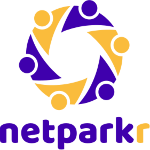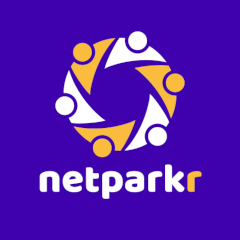Foti is a 33-year-old entrepreneur who co-founded GrowthMentor, a 2-sided platform that gives entrepreneurs the ability to connect with growth mentors for calls on Skype. He was born in America, but his parents were Greeks and he was exposed to entrepreneurship from a young age.
GrowthMentor, a two-sided platform that facilitates conversations between entrepreneurs and development mentors. They launched the business in September 2018 and have since grown it substantially, primarily through free marketing channels. Learn from Foti’s accomplishments and errors.
How My Multicultural Upbringing Prepared Me for Entrepreneurship
I am what is known as a ‘third culture child.’ I was born in the United States, but my parents are Greek. At the age of three, we relocated to Greece. Two years later, at the age of 5, I migrated returned to the United States without knowing English. At the age of 15, after I had forgotten the majority of my Greek, we returned to Greece. My exposure to entrepreneurship, however, has remained a constant throughout all of this insanity. In the 1980s and 1990s, my father was a fairly formidable commercial real estate developer in Florida. As a result, I recall spending my afternoons as a 10-year-old assisting my father on his construction sites and the father-son conversations we’d have on the way home where I’d learn about the nuances between cost per square foot, utilization rates, and negotiation tactics he’d use to get the lowest prices on construction material from vendors.
Twenty years later, I am now 33 years old and an entrepreneur myself! I am currently constructing a community known as GrowthMentor. GrowthMentor is a two-sided platform that connects entrepreneurs and marketers with exceptional growth mentors for Skype conversations. All mentors on the platform undergo a rigorous screening process. We guarantee that they have the experience to back up their claims, as well as the interpersonal skills necessary to be exceptional mentors. The annual membership fee for the platform is $99, but it includes 5 hours of complimentary mentorship calls and a number of other bonuses. Before they can begin charging for their services, all growth mentors must have completed at least three free mentoring sessions.
A Story of Finding Entrepreneurial Purpose
After completing my IB examinations in high school, I decided to continue scratching that entrepreneurial urge by majoring in finance at London’s CASS Business School. Honestly, university was a bit of a haze, but I do recall early on realizing that I disliked large financial institutions. I have never been able to reconcile fiat currencies with the absurdity of wealth inequality. We can create trillions of worthless derivatives and print money out of thin air, but two billion people lack access to safe drinkable water. Right… A few years later, when it came time to set up statistically significant A/B experiments, those statistics classes proved to be extremely valuable.
After graduating from college, I became the first marketing hire at managed hosting provider EuroVPS, where I oversaw growth. Due to my lack of digital marketing experience and my team’s predominance of engineers, I was forced to learn everything through trial and error on my own. I committed every rookie error in the book. From neglecting to set 301 redirects after a site relaunch to using broad match keywords without a negative keyword in Adwords. I’ve messed up in more ways than the majority of people could ever afford to mess up.
I spent innumerable hours perusing blog posts and enrolling in Udemy courses in order to advance in new areas. While I learned a great deal, I noticed that my productivity was inversely proportional to how much I learned. The more time I spent learning, the less time I had to complete actual tasks. There must be a superior method to simultaneously learn and remain competitively productive.
That’s when I had the notion.
This was the decisive action I took that ultimately led to the conception of GrowthMentor. Instead of viewing courses created by a random person who knows nothing about my business, I should create my own real-world courses that are specifically tailored to my current circumstance.
To accomplish this, I would construct job postings on Upwork such as “60-minute Skype call with Facebook Ads expert” and conduct screen shares with freelance subject-matter experts to learn directly from them in the field. I was astounded by how much quicker I learned using this method. I was consistently bursting through plateaus. If something seemed complex or impossible to learn, I would post a task on Upwork and schedule a call with an expert. Before the call, I would ensure that I have done my research and preparation in order to be prepared with structured inquiries. I would even record my screen for playback later. This allowed me to concentrate fully without having to take notes.
This is where the concept originated. I reasoned, “I’m a typical person with typical problems, so if this works for me, it will likely work for others as well!”
Understanding the Early Customers of GrowthMentor
I registered the GrowthMentor.io domain on June 18, 2017, but I did not begin working on the concept until October of that year. My wife teaches English online using a platform called Italki, so I knew I wanted to adopt a similar approach from a product standpoint, having seen it operate successfully for years.
The initial version of GrowthMentor was a landing page I created to validate the concept. I hacked together a landing page using a Twitter bootstrap template and then ran $500 worth of Adwords.
I created a landing page using a Twitter bootstrap template, paid $500 for Adwords traffic, and used the phrase “find business mentor” to direct people to it. I was able to get 40 leads with an 18% conversion rate and an average CPC of $2. Of which I spoke on the phone for customer development interviews with ten of them. To profile those early customers and gather as much qualitative information as I could on the growth pain points, I utilized a straightforward Typeform. I determined that all early respondents’ top complaint was loneliness. Additionally, social media is only partially resolving the issue and even making it worse. My personal reasons for starting those Skype sessions with the Upwork contractors were heavily influenced by this pain issue, therefore I looked into the root causes in more detail. I discovered that people who are growing have very particular pressures that are difficult to connect to if you are not also growing.
It was ready to start creating after around three months of customer development and positioning plan refinement. Prototyping followed by wireframing took around a month. We began by hand-drawing each screen before switching to Google Docs. Alek Manov created high resolution drawings using the Google Docs layouts of each screen, which we iterated on for a month using the InvisionApp. We were ready to begin development by the middle of March.
We hired Ragnarson, a company that specializes in Ruby on Rails web projects, to handle the development. With clickable prototypes on InvisionApp that exactly replicated the functionality of the finished product, we were well-prepared. This significantly cut down on the overall construction time. Six months after the official start of development in April, we released the public beta with more features than were really required. We were aware that the build-spec may have been a little bit more flexible, but we believed that our target demographic was very web-savvy and had greater expectations than your typical B2C consumer profiles.
We would execute this correctly if we were going to accomplish it. I won’t say how much it cost to create, but it was about equivalent to the price of a brand-new BMW automobile. We ran out of runway (my money) a month after we began, and now my salary from my day job is paying for the company’s ongoing development. Exciting times, for sure:)
Minimum viable product > Minimum delightful product
We didn’t make a big deal out of the platform before to debut; there were no pre-launch advertisements or anything of the kind. Shadow launches are great because they offer you time to make corrections before the attention is focused on you. In order to launch with a sizable number of mentors already on board, we ran a targeted 1:1 outreach effort for mentors. On the day the public beta was released, I believe there were around 15 mentors on the platform.
How We Attracted 100+ Signups with One Facebook Post
After we started, we conducted no promotion for the first two weeks. To increase the number of mentors on board, we only concentrated on 1:1 outreach, focusing on development individuals we really liked and who we thought had the perfect ethos match. We made the decision to step a bit farther into the spotlight after we had about 30 mentors. We made our first “public” appearance through a post on the SaaS Growth Hacks Facebook group, where I described the platform and enquired as to whether users found it interesting. I was astounded by the enthusiastic response. From that single post alone, we must have had more than 100 signups.
Since we’re bootstrapping, we first used all of the free marketing options. That required socializing in specialized groups like IndieHackers, GrowthHackers, and other Slack channels. We didn’t get much sleep during this period of nonstop activity. LinkedIn was also quite effective. Even though I don’t use social media much, I realized I had to improve if I wanted to portray the founder of a marketing platform. During those first several months, we wrote dozens of blog pieces as well. A couple of those pieces are beginning to rank for some really competitive keywords, but SEO is a long-term endeavor. The biggest mistake I made was not promoting those early pieces more. I even created a fairly snazzy checklist for it since I “knew” I should complete it, but I just ran out of energy.
Building a Community: The Key to Success in B2C Marketplaces
In our early years, we overextended ourselves. Instead of having my VA do all of the list building, I should have given her the promotion. In order to increase demand, I once embarked on a sizable targeted scraping effort with the big vision to send semi-personalized (at scale) email drips. I only used two or three of those lists in the end. It takes a lot of effort to correctly do outreach at scale, so when you’re balancing operations management, content creation, and a day job, it’s usually the first item to be cut from your “to-do” list. Anything carried out on a large scale has the potential to damage your brand if done incorrectly.
Our most effective marketing tactic was doing things that didn’t scale, like developing 1:1 relations with the mentors and mentees. Our supply consisted of badass growth marketers that genuinely wanted to assist individuals in growing, unlike other B2C 2-sided marketplaces like Airbnb where the supply side is just regular folks looking to earn some extra money. Many of them have extensive networks and are well-established in the startup environment. So for us, taking use of their networks was sort of a no-brainer. Instead of building a “marketplace,” we wanted to build a community.
We first established two exclusive Facebook groups: one for the mentors and one for the mentees. It ended up being a fantastic venue where we could discuss our progress, get advice from really clever development people, and network with other members.
The Power of Free Mentoring
We provided the option for mentors to set their rate to zero in December 2018. It would operate as a catalyst to increase platform engagement, according to our premise. It succeeded. Growth mentors have no trouble providing a few hours per month of free mentoring to bootstrapped firms since they genuinely liked assisting. This fully eliminated the obstacles that mentees had in reaching their “aha” moment, resulting in a rise of sessions booked and a subsequent development of reviews and social proof.
Since the price was $0, we didn’t profit from the surge in consumption. However, in those early stages before traction, maximizing for learning and obtaining early adopter social proof is more crucial than creating a rapid profit. Consider how we can now use that social proof in our marketing to broaden our audience and improve conversion rates. Exactly what we did was that!
After two months, we reached the milestone of +500 booked sessions and felt it was time to start making money. We made the decision to erect a paywall for the platform that costs $99 per year. All early users received free lifetime membership. Now, we want to offer memberships to raise money so we can keep developing our product.
I’ll give you three handpicked resources for founders each week along with the most recent interviews and articles from Failory. Join the +25,000 other founders of startups!
How Peer-to-Peer Approach Can Help You Master Difficult Topics
Finding a means to inform founders and marketers that there is a whole new approach that they may learn difficult material is the largest hurdle. That is the peer-to-peer approach. For instance, yesterday I was unable to for the life of me figure out how to set up Google Tag Manager’s cross domain tracking correctly. So I hopped on a 15-minute Skype session with development mentor and analytics expert Max Corbeau. On a Skype screenshare, he guided me through it, and in three minutes, my issue was resolved.
Without him, I would have probably hired a freelancer to repair it, missing the chance to gain new knowledge. Successful/busy individuals don’t have time to take hours-long online courses and read endless blog entries. Either they possess the necessary skills or they pay someone to perform the task for them. It wouldn’t be wise to spend their time. My biggest issue in the field of product marketing thus far has been conveying clearly that there is a middle ground alternative, but we’re getting there!
The largest problem with the chicken-or-egg problem, in my opinion, is demand side acquisition. Simple tasks like posting to Facebook groups and forums and yelling on LinkedIn sufficed for the first month. But once you’ve consumed the low-hanging fruit, you’ll need to up your game and pick a weapon. Outbound? Inbound? PPC? Referral? I used to think, “I’ll just do them all!” but, oh my my, it does not work when you’re a team of two people working this alongside another full-time job!
Growth experiment planning, execution, and results monitoring are all very simple tasks, but for me, the hardest part is dealing with the temptation to make changes in response to the findings. You may go in a million different directions, but as the growth lead, you must make the difficult decisions. Controlling my FOMO is the toughest challenge I have. There will always be that pesky little voice in the back of your brain telling you that by not doing the “new cool thing,” you’re missing out on great chances. That voice is just spouting trash 99 percent of the time. Neglect it.
The fact that I am a non-technical founder and don’t know Ruby on Rails is my biggest drawback. I am unable to just enter the code and make changes. Any necessary work, such as adding new features or fixing bugs, comes at a high financial expense. Additionally, this might be quite discouraging for a bootstrapped founder. to be aware that you are ready with the design and specifications for [insert killer feature] but just cannot afford it. But I suppose that’s life.
On the other hand, having a non-technical founder might also have its benefits. With product development, you end up being much more careful and relying heavily on user testing and statistics to support all of your choices. At the end of the day, you’re paying for it out of your own wallet and creating useless features. Additionally, it fuels your desire to increase your income. You must defend yourself since no one will save you. You desire to create that fresh feature. Find a method to close 100 new membership deals!
In retrospect, I believe that sending the crew to San Francisco for the StartupGrind conference was my biggest error. The toughest thing was having to miss one of my best friends’ weddings in order to travel four people for a week to San Francisco. Even though we took some fantastic pictures and established some strong relationships, was it all worthwhile? Time will tell, I suppose. On the other hand, I had the opportunity to witness firsthand how ugly the entire groveling for VC money atmosphere is. If I hadn’t witnessed that with my own two eyes, I don’t know if I would be as firmly planted in the #bootstrapped camp as I am today.
From waste of time to strategic partnerships
I would advise my old self, who existed before GrowthMentor, to stop worrying so much. Everything will turn out for the best. Take Sundays off and simply hang out, play more basketball, and spend more time in the sun.
Additionally, I would advise him to throw out any “at scale” outbound initiatives that I had planned but never carried out. What a waste of time it was. How long does it really take to write five highly tailored and effective emails each day? On the first day, maybe an hour, but as time goes on, you’ll grow quicker and faster since you’ll be accumulating a large repository of templates; by the second month, you’ll probably be able to accomplish ten each day. That’s 300 emails sent each month to highly relevant recipients who may later develop into strategic partners or, who knows, even pals!
Even though I’m currently planning a few campaigns, I’m aware that outbound at scale has its uses. However, at that early level, it just wasn’t the right match. I wish I had known about it sooner.
Discover the World of SEO through a Mentor’s Eyes
Unabashed promotion: go to GrowthMentor and schedule a call with a growth mentor. Don’t worry; everyone is quite friendly. Our “No Jerks Allowed” policy is quite rigorous. We take that very seriously. A conversation with a seasoned startup fighter is like entering a time machine and seeing the world through someone else’s eyes as an early-stage entrepreneur who is just getting started.
various approaches work for various people with regard to books, podcasts, etc. I’m not sure how to even respond to this because there is just so much excellent information available. I’ll probably just mention my favorite podcast, thestartupchat, and the excellent site GrowAndConvert (Benji is also a mentor on the platform) if you want to master content marketing.
As a last reminder, give active learning the edge over passive learning. It’s so simple to blindly consume knowledge that you’ll never use, wasting significant time in the process. Most likely, you already know enough to have a significant impact on the world. Create whatever you want! You can do this!
For further information:
We gather unique business case studies from all over the internet, to inspire you with a wide range of business ideas. This case study was supervised by our team and it definitely caught our interest. You can find other inspiring business stories here.







